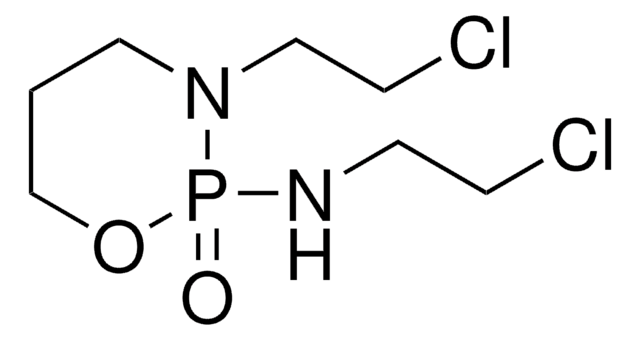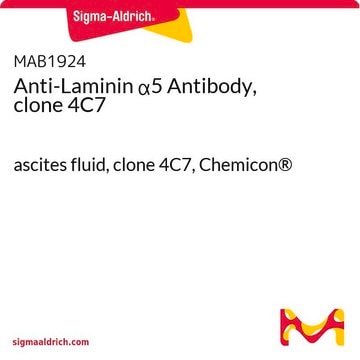L9393
Anti-Laminin antibody produced in rabbit

0.5 mg/mL, affinity isolated antibody, buffered aqueous solution
Synonym(s):
Laminin Antibody
About This Item
Recommended Products
biological source
rabbit
Quality Level
conjugate
unconjugated
antibody form
affinity isolated antibody
antibody product type
primary antibodies
clone
polyclonal
form
buffered aqueous solution
species reactivity
animal, human
enhanced validation
independent
Learn more about Antibody Enhanced Validation
concentration
0.5 mg/mL
technique(s)
dot blot: 1:1,000
immunohistochemistry (formalin-fixed, paraffin-embedded sections): 1:30 using human and animal tissues
microarray: suitable
UniProt accession no.
application(s)
research pathology
shipped in
dry ice
storage temp.
−20°C
target post-translational modification
unmodified
Gene Information
human ... LAMA1(284217)
mouse ... Lama1(16772)
General description
Specificity
Immunogen
Application
A working dilution of at least 1:1,000 was determined by a dot blot immunoassay using laminin at 50 ng per dot.
A working dilution of at least 1:25 was determined by indirect immunohistology using formalin-fixed, paraffin-embedded human and animal tissues.
Biochem/physiol Actions
Physical form
Storage and Stability
Disclaimer
Not finding the right product?
Try our Product Selector Tool.
Storage Class Code
10 - Combustible liquids
WGK
WGK 2
Flash Point(F)
Not applicable
Flash Point(C)
Not applicable
Certificates of Analysis (COA)
Search for Certificates of Analysis (COA) by entering the products Lot/Batch Number. Lot and Batch Numbers can be found on a product’s label following the words ‘Lot’ or ‘Batch’.
Already Own This Product?
Find documentation for the products that you have recently purchased in the Document Library.
Customers Also Viewed
Our team of scientists has experience in all areas of research including Life Science, Material Science, Chemical Synthesis, Chromatography, Analytical and many others.
Contact Technical Service
















